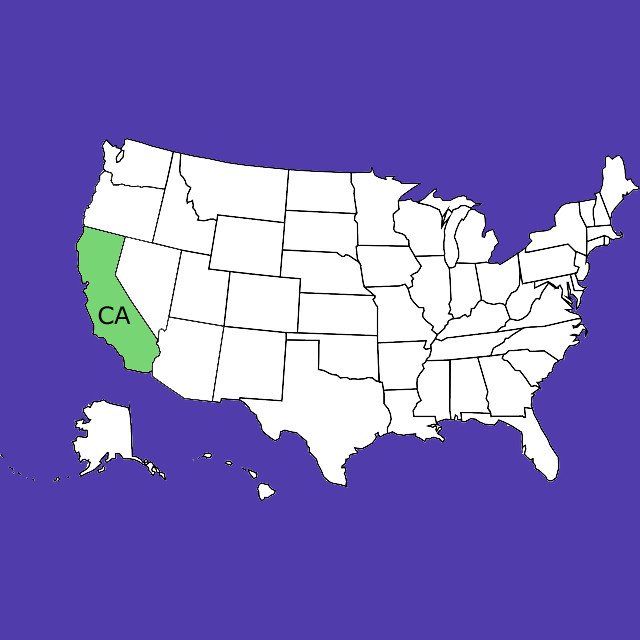Co-authored by:
- Heather Burke, Nevada City, CA
- Anne Kelson, Oakland, CA
CDFA’s cannabis appellation-related regulations were finally released on February 20, 2020, and at first glance it appears CDFA has a deep understanding of the critical importance of this program to cannabis farmers throughout the state. Here’s a quick overview:
- Appellation petitions are slated to cost about $20,000. Since fees can not exceed the costs to run the program, the higher-than expected price tag likely means CDFA is anticipating a rigorous petition review process and/or significant program oversight.
- Petitions must be filed by a minimum of at least three (3) or more unique businesses, meaning one business with three licenses cannot file a petition. Collaboration with at least two other businesses is required, which we love! In fact, the CDFA has indicated that they came up with the requirement of three or more business members in order to be compatible with statutory co-ops, which have the same requirement of 3 or more members.
- Petitions will be reviewed by CDFA and potentially a seven-person panel. Panelists must have experience in cannabis cultivation, intellectual property, sustainable agriculture, or community-based research, which we find encouraging.
- The CDFA rejected using either the AVA model (used for wines in the U.S.) or the AOC model (used in France), and instead has proposed a new appellation standard for California cannabis. The petition requirements are vast, so here are a few of the biggies which must be included:a. A description of the quality, characteristic, or reputation of the cannabis produced within the appellation which is caused by a distinctive geographical feature. Geographical features affecting cannabis cultivation will likely require significant biophysical data, such as climate information (temperature, precipitation, wind, fog, and solar orientation), geological information (underlying formations, earthquake fault lines, flood lines, etc.), physical features of the land (bodies of water, watersheds, mountain ranges, etc.)
b. A definition of the standards, practices, and cultivars to be mandated within an appellation area, and identification of at least one which acts to preserve the distinctiveness of a geographical feature and maintain its relevance to cannabis cultivation.
c. Evidence of the legacy, history, and economic importance of cannabis cultivation for the appellation area.
d. A list of license types which are prohibited from using the appellation of origin (i.e. Indoor, Mixed-light Tier 1, etc.). In other words, the CDFA effectively punted the controversial issue of who is included by requiring petitioning groups to explicitly state which license types are excluded.
e. Evidence of historical name use, including a detailed explanation of how the name has been used in the geographical area of the proposed appellation, evidence of name use from sources independent to the petitioner, and evidence that the proposed name is “directly’ associated with an area in which cannabis cultivation exists. Name evidence can include historical, government or commercial maps, books, newspapers, tourism promotional materials, local business or school names, and road names, among others.
f. Maps and boundary description, including a depiction of the proposed boundary on USGS topographical maps, with a scale large enough to show adequate detail of the proposed boundary line, as well as an exact boundary of the appellation of origin featured clearly on the map without obscuring the maps underlying features.
- As expected, trademarks that conflict with appellation names will need to be phased out within 3 years of the date an appellation with a conflicting name is approved by the state, as appellation names will trump existing trademarks (after the 3-year sunset period). After that, use of conflicting trademarks will be considered false advertising.
Big Picture Takeaways
Based on the draft language, the regulations impose a rigorous evidentiary burden on appellation petitioners, potentially requiring significant historical, scientific, engineering/mapping, and related support. Petitions could take months or years to prepare, and could be voluminous.
Importantly, the petition process could be far more effective and long-lasting if done in collaboration with other farmers in the same region, as numerous appellations could be mapped out, defined, and petitioned for in one fell swoop. The importance of mapping the major and minor appellations with the broader community prior to submitting petitions cannot be overstated.
We strongly encourage licensees to include unregulated farmers in community discussions about mapping the legacy regions, as it is more-likely-than-not that an increasing number of farms will come online in the coming years. The decisions we make about these petitions will affect the cannabis communities in legacy-producing regions for generations to come, so they have a right to have a seat at the table while we’re figuring it out. The authors of this blog believe this component is a moral imperative.
Call to Action
The public has 45 calendar days in which to submit comments on these draft rules. However, rather than submitting comments in a vacuum, we strongly encourage all interested parties to reach out to their various trade and/or policy organizations and submit comments in a coordinated manner.
Here’s a non-exhaustive list of the organizations who we expect to be submitting comments. If we missed your group, please let us know and we’ll add you to this list STAT.
- Nevada County Cannabis Alliance
- Humboldt County Growers Association
- Mendocino Cannabis Alliance
- Trinity County Agriculture Alliance
- El Dorado Growers Alliance
- International Cannabis Farmers Association
- Origins Council
- Mendocino Appellations Project
We also encourage any lawyers who are interested in this issue of critical importance to join the International Cannabis Bar Association.
Based on the language in the draft regulations, CDFA understands this program has the potential to set global precedent, but it is up to cannabis farmers to define what that looks like in practice. If done right, we can hand the cannabis appellation program down to our children and future generations, so please engage!




